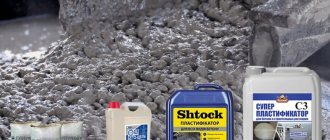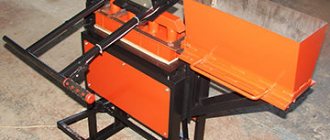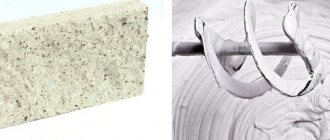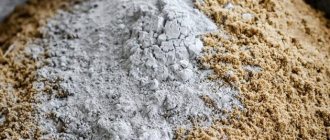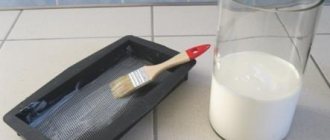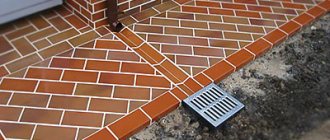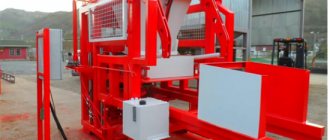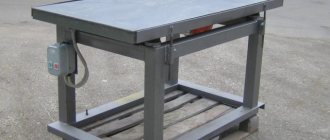Cladding tiles are considered a popular building material, which is used to decorate garden areas, country cottages and other premises. Since the surface of the tile is subject to heavy loads, temperature fluctuations and precipitation, it must have an optimal degree of strength. It is achieved by adding special additives - plasticizers.
What is it needed for
Before making a plasticizer for paving slabs, you should understand what its role is and what a plasticizer is.
When carrying out work on decorating their backyard with tiles, many owners are faced with the following problem: the prepared solution does not acquire the required hardness and begins to disintegrate. This is due to the absence of an important component that gives the tile strength properties.
In addition to increasing strength, the plasticizer gives the tile composition elasticity and flexibility to change. In this case, the possibility of voids appearing is eliminated. If you ignore the introduction of the additive into the solution, this will lead to its rapid drying and cracking. As the number of pores increases, the product will lose its frost resistance and begin to rupture.
The use of additives solves the following problems:
- Provides the ability to control the concrete mixture for laying tiles for fluidity and mobility. This eliminates the possibility of voids and allows the construction of monolithic structures.
- Promotes good connection of tiles with metal components.
- Reduces the number of pores and extends the service life of the product.
Paving slab manufacturing technology
The technology for making the material yourself may vary depending on the intended area of use of the tiles, as well as production time and budget constraints. If the manufacturer is not too interested in the external decorative indicators and quality characteristics of the tile covering, then it is advisable to use a single-layer production technology:
- preparation of casting molds;
- production of working concrete solution;
- vibration casting process;
- keeping the solution inside the mold for a couple of days;
- stripping of the finished product;
- the process of aging products in order to gain maximum strength.
When manufacturing exclusive products intended for use as a decorative element of landscape design, it is recommended to give preference to two-layer pouring technology:
- preparation of casting molds;
- preparing a working solution with pigments for casting the first outer layer;
- preparing a working solution for casting the second or lower layer;
- process of vibration casting of decorative layer;
- filling the second layer;
- drying forms;
- stripping of finished products;
- maintaining the resulting product in order to achieve maximum strength indicators.
The technology is based on uniform filling of the casting mold and removal of air bubbles during vibration.
At the final stage, drying and subsequent removal of the finished tile from the mold are necessary for further drying.
Advantages
The presence of polymer particles in the tile solution contributes to the following advantages:
- Mobility.
- Ability to withstand exposure to sub-zero temperatures.
- Long service life and strength properties.
- Uniform consistency.
- Good adhesion of the composition to the molds.
- Ease of finishing work.
Another advantage of tiles with polymers is winter hardiness. Therefore, even in severe winter, the material retains its original appearance and does not crack.
The price of additional components is determined by the brand and manufacturer. You can check it on the Internet or with a hardware store employee.
The approximate cost varies from 550 to 2.5 thousand rubles. A package weighing 1 kg will cost 64 rubles.
Varieties
Modern plasticizing additives are produced using special technologies. Among them there are multifunctional preparations that improve almost all the main characteristics of concrete, and highly specialized ones that increase only certain properties of the material. Based on their composition, all plasticizers are divided into several groups:
- Modifiers. Designed to strengthen products and maintain the mobility of concrete mortar. The latter contributes to the uniform distribution of the mixture.
- Antifreeze. Concrete hardens even in subzero temperatures.
- Superplasticizers. They are used at high temperatures, prolonged transportation of the solution, and improve its fluidity.
- Strength gain accelerators. The material acquires high strength in the first day of hardening.
- Air-entraining. Small air bubbles form inside the mixture, which increases its frost resistance.
- Self-sealing. Typically used in the process of pouring densely reinforced thin-walled structures.
The best plasticizer is a high-quality composition, selected taking into account the volume of all work and operating conditions.
Plasticizers to increase the frost resistance of concrete are used when the construction process of buildings is carried out in winter at low temperatures Source stroy-podskazka.ru
Which is better
There are several types of polymer additives available for sale. To choose the appropriate type, you should carefully study the properties and features of each option:
- Dry type. Intended for small volumes of work and can be operated at a temperature range not lower than -2°C.
- Liquid. Designed for both hot and cold periods.
To figure out which plasticizer is best to choose, you need to determine the type of work and operating conditions.
Additional components
The use of plasticizers, as well as superplasticizers, makes it possible to produce products that, after pouring into molds, do not need to be subjected to vibration. If you reduce the volume of water in the composition, you can get a solution that will be distinguished by its self-sealing qualities, in addition, it will be characterized by high strength. In order to obtain the product of the required shade, iron oxide pigments should be used, which perfectly resist the effects of ultraviolet radiation, water and high temperatures. Concrete can be strengthened with reinforcing polypropylene fiber, which can replace metal reinforcement.
What can be replaced
Often, beginning builders do not have the opportunity to purchase plasticizers for tiles and are interested in alternative solutions.
The following means are used:
- For cleaning kitchen utensils.
- Washing powder, which is pre-diluted in water.
- Laundry soap. It can be grated or dissolved in water.
- Foam former.
- Tile glue. It could be PVA.
There are different analogues of plasticizers. In addition, at minimal cost you can prepare them yourself.
To improve the performance properties of an alternative plasticizer, soap or lime is used, which provides good adhesiveness and softness. The consumption of raw materials is determined at the production site.
The forms into which the solution will be poured are laid out on a flat surface. The presence of a vibrating table will simplify the production process. The internal part is treated with a special lubricant. As such, you can use a “home-grown” composition by mixing used engine oil and water. The suspension is applied to the equipment.
Next, the concrete mixture is distributed into forms with thorough compaction. If there is no vibration, ramming is done using the bayonet method using reinforcement or any other available means.
To level the top surface, you need to get rid of the excess and smooth it down. When the concrete reaches more than 75% strength, it will need to be removed from the mold and left to harden.
Use of ready-made plasticizers
The use of ready-made plasticizers is not always economically justified. The first reason for this is their high price, which can exceed the cost of concrete ingredients. Another factor is the possibility of a large remainder of material that cannot be profitably sold. The advantages of factory mixtures are as follows:
- all proportions of the substance are maintained, the quality of the product will be high;
- the purpose, safety measures and rules for using the product are indicated on the packaging;
- there is no need to waste time and effort preparing the mixture;
- The remaining solution can be shared with friends and neighbors.
Independent production
Since purchasing a foam former is quite problematic, craftsmen prefer detergents. Based on them, you can create a high-quality plasticizer for paving slabs with your own hands, without resorting to complex production technologies. The volume of the component is calculated taking into account the amount of cement, sand and aggregate.
If the batch is made with a whole bag of cement and expanded clay, then liquid soap or powder will be added to the mixture, which is diluted in water. Due to these properties, the solution will begin to harden after 3 hours, which will ensure its free distribution throughout the workpiece.
The plasticizer for making paving slabs requires the correct amount of soap to be selected. If expanded clay or other material absorbs the entire soap solution, the final batch will be of low quality. Soap compounds also promote good lubrication.
In addition to soap, slaked lime must be present in the cement solution. Its task is to provide good adhesiveness and elasticity, as well as to create a flat and smooth surface.
When producing plasticizers independently, it is necessary to carry out calculations directly on the construction site. First you need to create a couple of batches, changing the amount of additives.
Detergents as additives
Since soap solutions have increased fluidity and can enter any pores, enveloping them, this makes the raw material for the plasticizer more elastic and susceptible to change.
From an economic point of view, it is better to stick to soap. Various retail outlets offer affordable models of liquid soap in 5 liter bottles. This option is often used by builders, which is explained by its low cost. You can also take classic bar soap, first grind it on a grater and dissolve it in hot water.
Lime is a broad-spectrum plasticizer
When figuring out which plasticizer to make at home, you should familiarize yourself with the properties of lime. Its task is to increase the plasticity of the solution and eliminate the problem of cracks. Tiles with this additive have increased strength properties, a smooth surface and other distinctive properties. But if lime is present in the composition, it is prohibited to add other components.
Step-by-step preparation of the solution
Now we will look at several options for properly preparing a solution for the production of paving slabs.
Let's start with the simplest methods and gradually move on to more complex ones. When you are preparing a solution for the production of paving slabs at home, it is not necessary to follow the standards that are recommended for enterprises. If you try really hard, you can use any concrete mixture recipe . Below are some of the most common ones.
We dilute the additive
Each addition is made in advance. Before doing this, you should familiarize yourself with the peculiarities of its breeding.
They consist of the following points:
- We heat the water to a temperature of +40°C.
- Add a powder additive.
- Mix the ingredients thoroughly using a mixer or punch.
- Leave the mixture to harden.
In order not to waste time, it is better to start such work in the evening. In the morning, all that remains is to mix the solution and proceed to the task at hand.
Preparatory work before mixing the mixture
In order to prepare a solution for paving slabs, the proportions of which will be described in the article, you need to do some preparatory work, which consists of making sure that you have the entire set of tools and materials. Thus, a concrete mixer will be useful, but if necessary, it can be replaced with a container and a shovel. Among other things, the following will be useful:
- modifier;
- cement;
- water;
- sand;
- crushed stone;
- plasticizer;
- coloring pigment of the required color.
Proper introduction of additives
In order to correctly calculate the amount of plasticizer that will interact with future paving stones, it is necessary to take into account a number of requirements and nuances:
- First you need to combine the key components (cement composition, crushed stone, polymer components and pigment that gives the surface a tint).
- The additive is added immediately after preparing all components. If you miss this time, it will lose its properties and become unsuitable for further use.
- Homogeneous consistency and plasticizer are combined in time. Otherwise, the final product will be of low quality.
The optimal proportions look like this:
- For mixing, use 20 liters of water, 4 tbsp. l. liquid soap.
- These substances are thoroughly mixed.
- If washing powder is used, it must first be dissolved in hot water.
- At the next stage you will need to add dyes and 2 buckets of crushed stone.
- When introducing the next additive, it is important to remember to stir the solution.
- Next you need to add two buckets of cement and a bucket of crushed stone.
- At the last stage, 4 buckets of sand are added.
If this sequence of actions is followed, the plasticizer solution will obtain the correct consistency and will be functional.
As an alternative to store-bought plasticizer, you can use special hardeners that are sold in construction stores. They not only give the mixture hardness, but also protect it from deformation during severe frosts.
Supplements that form bubbles are available for sale in Moscow. They increase the strength properties of the product and make it durable.
Recommended Ratios
The main principle of adding plasticizers when mixing concrete with your own hands is that excess is unacceptable, it is better to make a smaller mistake. The optimal proportions for substances replacing professional compositions are shown in the table:
| Name | Recommended ratio, no more | General input rules |
| Shampoo | 200-400 ml per 100 kg of cement | Added at the pouring stage, simultaneously with water, but not in foamed form |
| Liquid soap | ||
| Washing powder for automatic machines | 200-300 g per 100 kg of binder | Administered exclusively in diluted form |
| Slaked lime | From 1:1 for plaster mixtures for internal use, to 1:6 for solutions for external use. | Mixing fluff with cement is allowed, but to achieve maximum effect, it is better to add lime in a creamy state |
| Silicate glue | From 2 to 10% of the total mass of the solution, an excess leads to almost instant hardening and crumbling. Another recommended proportion is 1:50 in relation to cement. | In a diluted state |
| Polyvinyl acetate | 5-20 l per 1 m3 of solution |
It is difficult to say which plasticizer is better for concrete; the choice of the final option depends on the intended purpose of the building structures and the conditions of the work. The above additives cannot be regarded as antifreeze or complex; in this regard, ready-made factory formulations definitely win
When choosing the latter, attention is paid to consumption, price, application and operating temperatures, and possible limitations. All this data must be written down in the instructions.
Cost of industrial plasticizers
| Brand name | Declared effect, properties | Consumption, by default, per 100 kg of cement | Application temperature, °C | Package weight/volume | Price, rubles |
| Superplasticizer for concrete BS-84, Aqua Well | Increasing the plasticity and fluidity of solutions, improving the structure and strength of concrete. For the production of reinforced concrete products | 1% by weight of the mixture | From+5 to +35 | 5 kg | 175 |
| Plasticizer S-3 | Sold in powder form or 36% solution. Increases mobility up to P5, makes the hardened surface smooth, reduces the volume of added water by 20% | 0.5-0.7 kg | -40 to +80 | 25 | 1200 (from 48 per 1 kg) |
| M5Plus | Accelerated strength gain, plasticization of semi-dry screed, self-leveling and heated floor systems | 1 l | From+5 to +35 | 10 l | 500 |
| Isomat Plastiproof | Waterproofing composition with plasticizer properties, increases the water resistance of concrete | 0.2-0.5 kg | 5 kg | 990 | |
| ArmMix Nordplast | Antifreeze additive that increases the rate of hardening and plasticity of the solution | 1-2 l | From -15 | 1 l | 70 |
| Saponified wood resin | Complex liquid additive that reduces cement consumption by 5-7%, improves the workability, frost resistance and insulating properties of concrete | 0.06 kg | From+5 to +35 | 10 kg | 580 |
Material consumption, volumes and proportions
When adding liquid soap, you should follow this calculation: 2 tbsp. l. substances onto a bucket of cement. Experts often replace soap with dishwashing detergent. If lime is used instead of detergents, some testing should be done to obtain stickiness and elasticity. So, when mixing the solution, you need to adhere to the proportions of 6:1 (1 part lime to 6 parts cement mixture).
When starting tile production, do not forget about introducing a suitable plasticizer. Its type and properties are determined by the scope of work and financial capabilities. Before starting to lay a tiled surface, study the features of products from different brands, read reviews and recommendations. If you want to achieve maximum savings, you can try creating the additive yourself.
To prevent the appearance of a large amount of foam when introducing additives, it is worth abandoning the substances that create such an effect. You can also wait until the foam solution lies evenly and begin mixing the components.
To simplify the work ahead, it is advisable to use a concrete mixer. If it is missing, you can use a shovel and a primitive container. Using simple available tools, you can simplify the work ahead and produce high-quality tile plasticizer.
Manual kneading
Cement grades up to M350 are suitable for manual mixing.
You can manually mix only a small amount of solution efficiently:
- Dissolve the plasticizer in warm water as indicated in the instructions, stir with a construction mixer for 15 minutes.
- Mix cement and aggregate.
- Add diluted plasticizer to water and mix.
- Mix all ingredients.
Manual kneading is possible not only in a container, but also on a wooden board or metal sheet with sides:
- Pour sand in a heap along the sheet.
- Make a depression in the center.
- Pour cement into the hole and use a shovel to gradually “wrap” the sand into the cement.
- Mix sand and cement well.
- Pour water from a watering can and mix.
- Scatter the crushed stone evenly and mix.
- Continue mixing, gradually adding water.
Use clean water and the most pure, free of impurities, fillers. Choose coarse and medium sand, and fine crushed stone.
Approximate density of fillers (in kg/cubic m):
- gravel filler – 1600,
- granite crushed stone, quartz sand – 1500,
- expanded clay – 600-800.
Do not use expired cement or residues from previous work. The cement must be fresh, then the structures will turn out without cracks.
Sometimes when preparing a solution at home, they use the proportions of the components not by weight, but by volume, for example, in buckets.
Popular formula by volume:
- cement 1 part,
- sand 4 parts,
- crushed stone 2 parts,
- water 0.5 parts.
When using M400 cement, M250 concrete is obtained; when using M500 cement, the concrete is M350.
Other options for the ratio of cement/sand/crushed stone/water by volume:
- for paths, floors – 1/ 3.5/ 5.7/ 0.5;
- for fences, garages, foundations – 1/ 2.8/ 4.8/ 0.5;
- for strip foundations and walls – 1/ 1.9/ 3.7/ 0.5;
- very durable, quickly hardening – 1/ 1.2/ 2.7/ 0.5.
